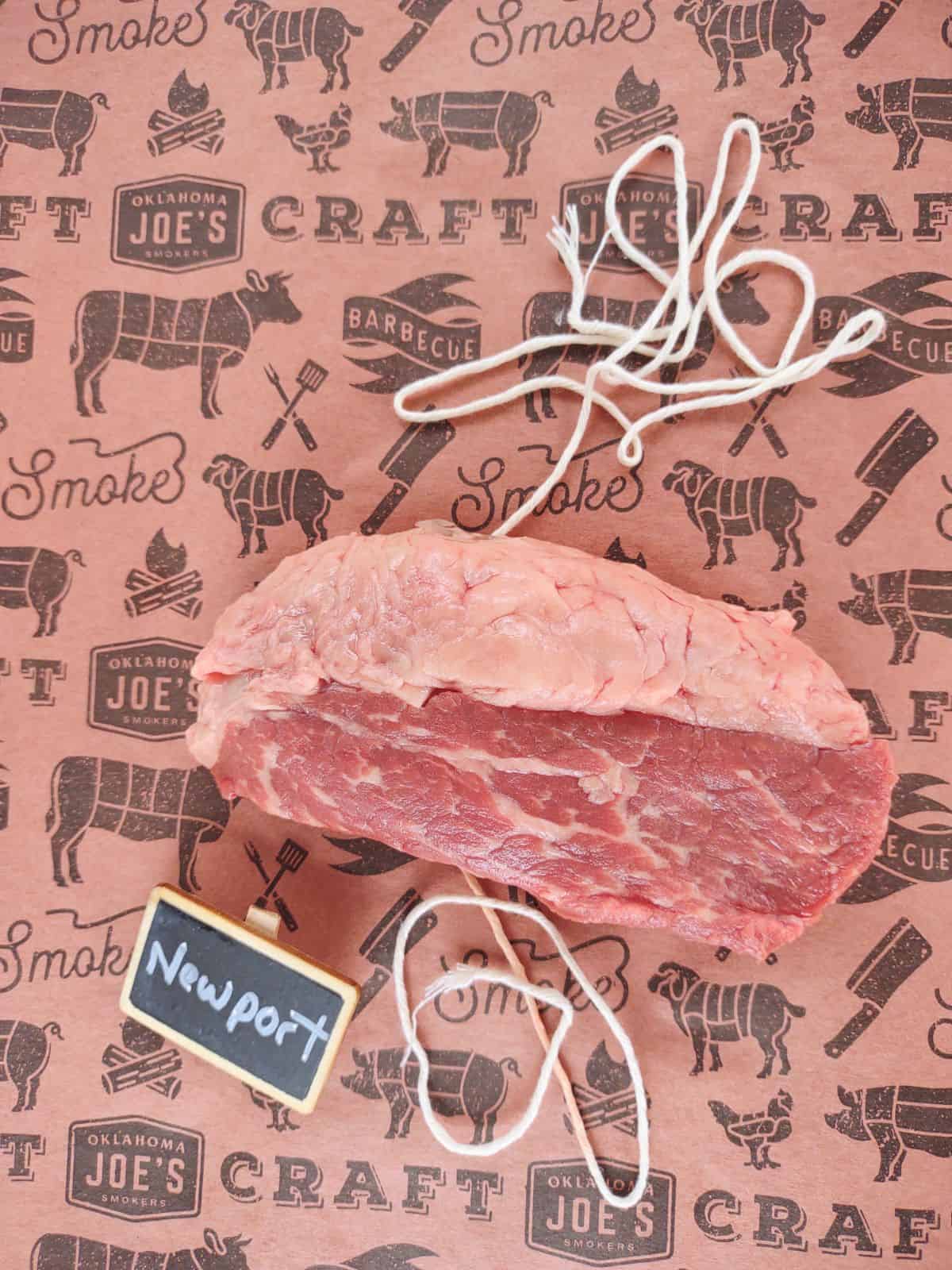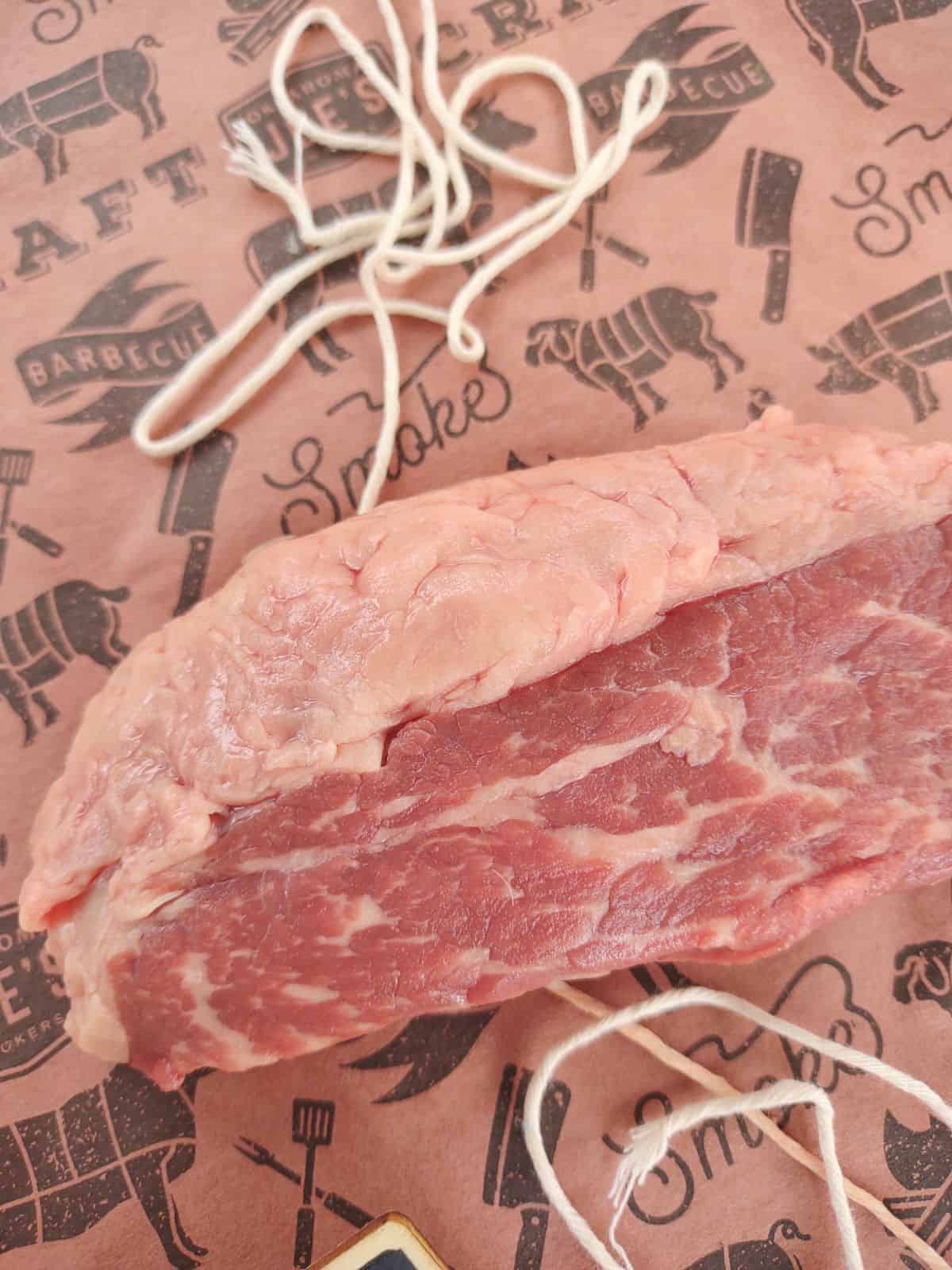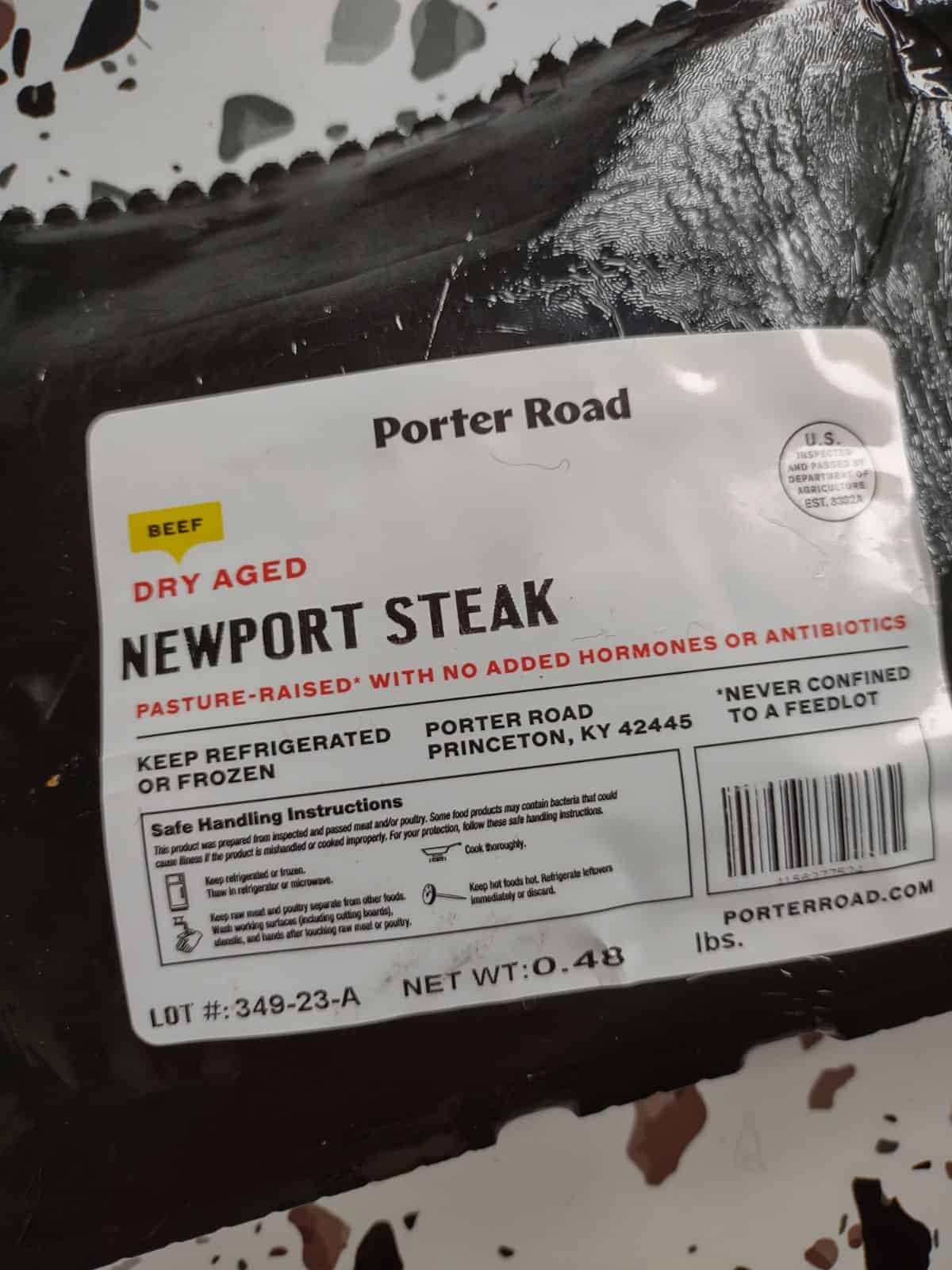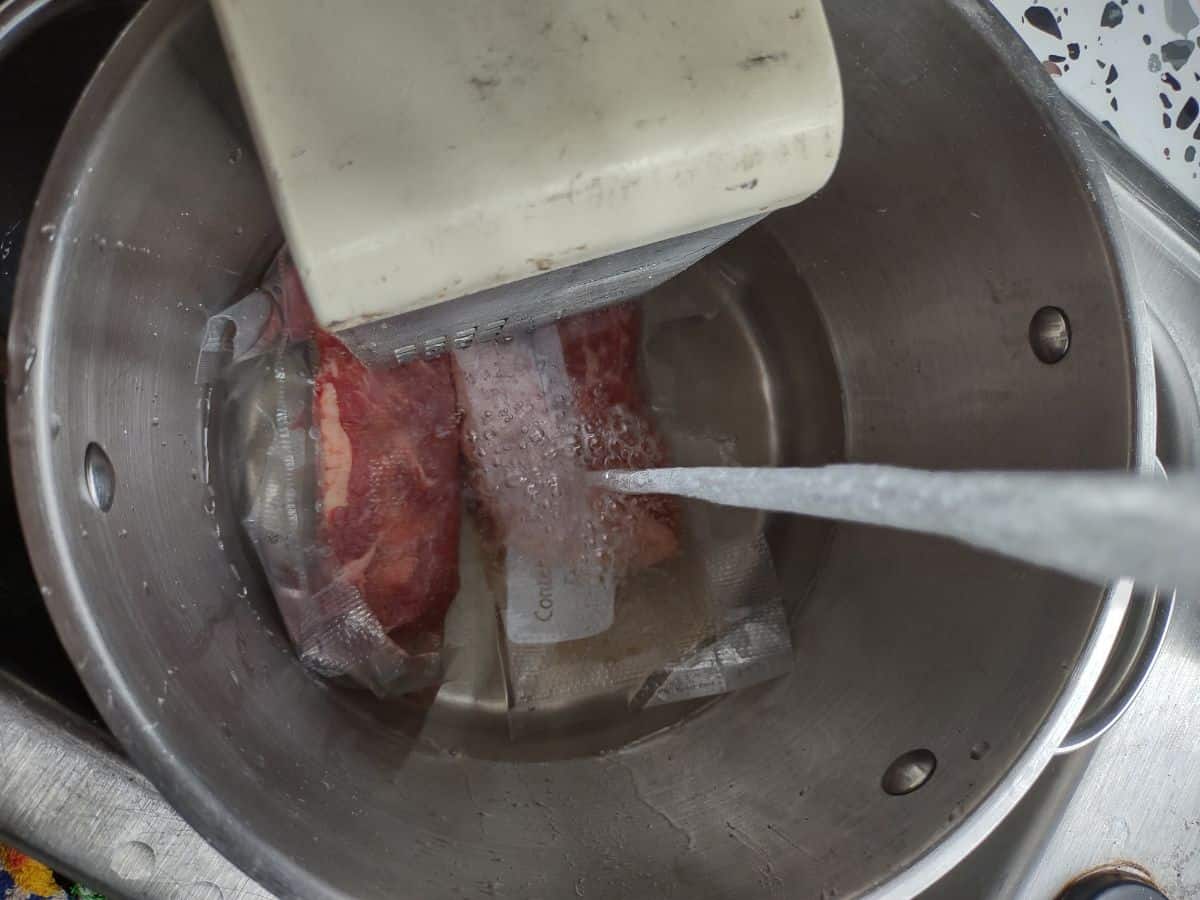Not sure what a Newport steak is or how to cook one? Read on and we will tell you all about this delicious steak and where you can get yours.

This post includes affiliate links. This means that, at no additional cost to you, I will earn a commission if you click through and make a purchase. These are products and services I recommend because I use or trust them. Cookies will be used to track the affiliate links you click.
I am always up for trying a different type of steak. I am amazed at how many there and all the different ways a butcher can cut up beef.
I have never heard of a Newport steak before so when I discovered them on Porter Road's website I just had to try them. Let me share with you what this steak is all about.
Jump to:
🥩 What is a Newport Steak?
The Newport steak is sometimes also called the Tri-Tip steak. It's a steak cut from the larger Tri-Tip cut. I assumed that the name "Newport" came from Newport Beach in California as Tri-Tip is super popular on the west coast.
Alas that actually isn't the case. This steak cut was actually born in a butcher shop in New York City. The story goes that it was named after seeing an ad for tobacco products. Not what I expected at all. Others lovingly call it the NYC Apartment steak. The size of the steak is perfect for one person living by themselves in a small apartment.
In case you aren't familiar with Tri-Tip, it's cut from the Bottom Sirloin, which is naturally right underneath the Top Sirloin. It's also located just above the flank. It has nice marbling running through it and only has some fat around the very edge, which is sometimes trimmed off completely depending on the butcher.
The Newport steak actually has that fat still attached as you can see in this photo.

🔥 How to Cook
Do you have a favorite way to cook a Tri-Tip? You can do that with Newport steaks but on a smaller scale. The steak can be smoked or braised.
For me, whenever I am trying out a new steak I turn to my immersion circulator which is used for sous vide cooking. This allows me to cook the steak to the perfect temperature and then I finish it in a very hot cast iron pan. You will find more instructions below.
The fat cap could cause some flares up when grilling or some smoking when cooking indoors. To avoid a smoky kitchen, you can cook the steak on the stovetop to start and then finish in the oven. I would do about 2 minutes per side and then another 4 minutes in the oven at 400 degrees.
🎧 Check out our podcast to learn about the Bavette steak.

🛒 Where to Buy
I got my Newport steak from my favorite online butcher Porter Road. They are known for their amazing dry aged beef. They source their meat from small farms in Kentucky and Tennessee. Every single morsel of meat I have had for them so far has been wonderful.
The steak I got was just about ½ a pound. It was a quality steak with a good amount of marbling. I would definitely get this once again and again.
🥩 Comparison - I ate this steak at the same time I cooked a Petite Denver steak from Porter Road as well. My wife and I both felt that the Newport Steak was more tender and juicier than the Denver. However the flavor of the Denver was more beefy tasting. Both were delicious. Nice thing about the Denver was that it was 100% usable meat as with Newport you have that fat cap that you would discard. So it's a trade-off for a juicer steak.
🛒Order Your Steak
For ordering steaks online you can't go wrong with Porter Road. Their beef is dry aged and cut by skilled butchers . A lot of their cuts are even shipped fresh. Get yours today.
🛁 Sous Vide
Here are my instructions for sous vide. I will show you what equipment I use.

I always start by liberally seasoning my steak with kosher salt. You can use some freshly cracked black pepper as well. Then it's time to vacuum seal. Here is what I use for that
I like just buying the huge pack of gallon sized vacuum bags. It gives me a big bag if I need it and if I don't, I can just cut the bag down and seal both ends on the part I cut off. The first pack of bags I bought lasted me for 16 months.

I attach my circulator to a stock pot. If I can, I wedge my steaks under the circulator just to be sure they stay submerged. It usually works. Then I fill the pot with hot water to the minimum fill line. Starting with hot water just helps get the water bath to temperature faster.
Here are your temperature options.
| Rare | 120-125 degrees |
| Medium Rare | 130-135 degrees |
| Medium | 140 degrees |
I like mine right at 135. That's the sweet spot for me. I wouldn't cook the steak more than 140 degrees. I think you start getting past that temperature and your steak won't be tender enough.
🥩 Time - For this particular steak I think 2 hours as a good amount of time to get the steak delicious and tender. Up to 4 hours would be fine as well, but don't go under 2.
When the steak is done, I get my Lodge Cast Iron skillet fiery hot on the stove. To test if you drop some water on it will immediately evaporate.
I want to get some brown on that steak. To help with that I add a little bit of oil. You can it directly to the steak. You don't need much just a drizzle. Then cook the steak for 30 to 45 seconds to just get it brown. I don't want to go too long and ruin that nice inferior we have from cooking it perfectly in the sous vide.
🔪 Tip - Always cut your steak against the grain. This will make for short meat fibers and make the steak more tender in your mouth.
🍖 Other Steaks
Interested in learning all about the different types of steaks there are? Get your education started with these:

Ingredients
- 1 Newport steak
- kosher salt to taste
- oil for searing at the end
Instructions
- Liberally season both sides of your steak.
- Place the steak into a vacuum sealable bag. Remove as much air as you can, being careful not to suck in any liquid out of the bag.
- Set your immersion circulator to 130-135 degrees for medium rare. Or up to 140 for medium. I don't recommend cooking it more than 140.
- Place the steak into the water bath. Set a timer for 2 hours.
- Remove the steak with a pair of tongs after the 2 hours is up.
- Add some oil to a cast iron pan. Set the pan over high heat and wait until the pan is sizzling hot. Then cook the steak for 30-45 seconds per side to just get it browned.
- Slice the steak against the grain when eating.


Leave a Reply